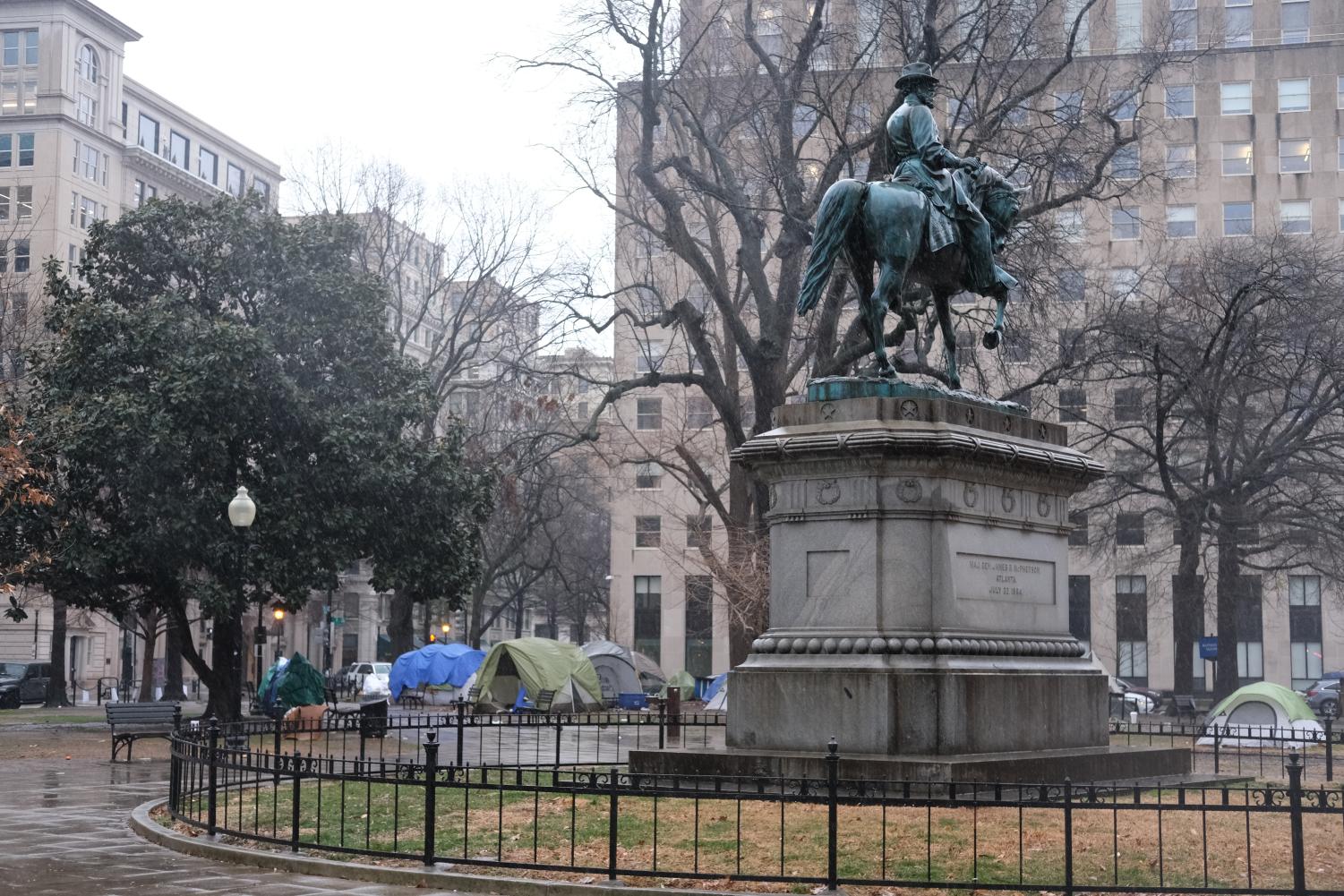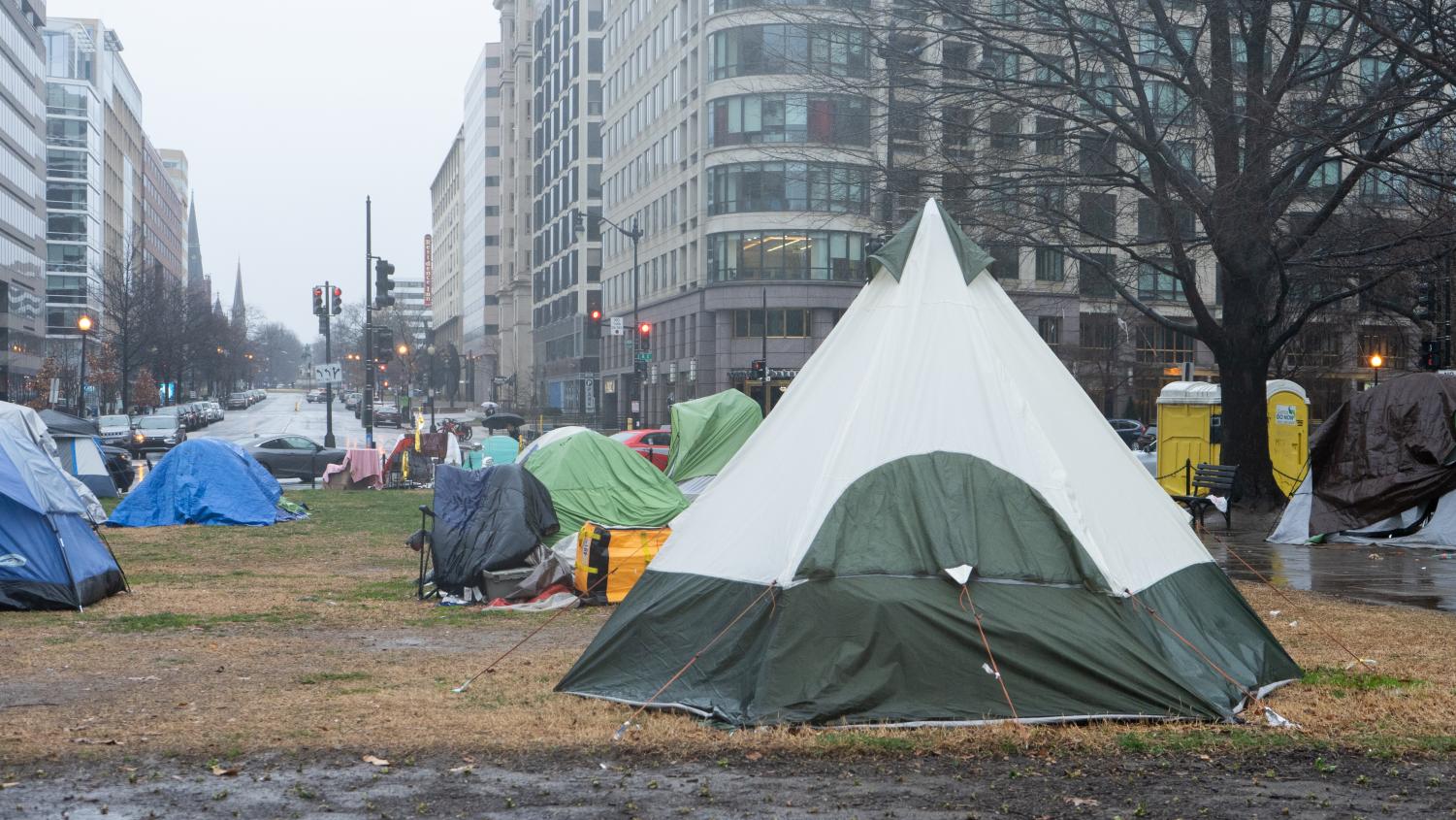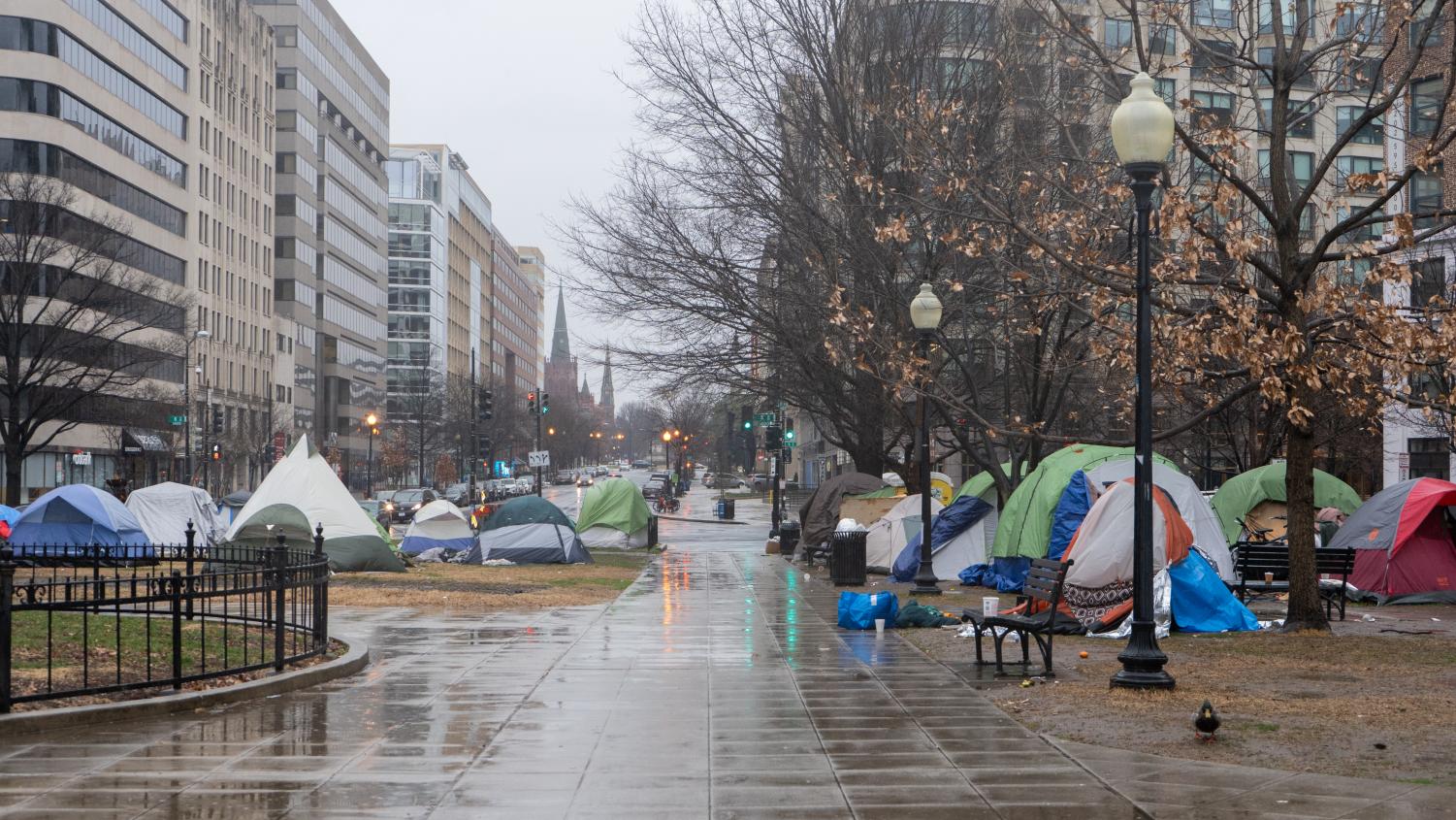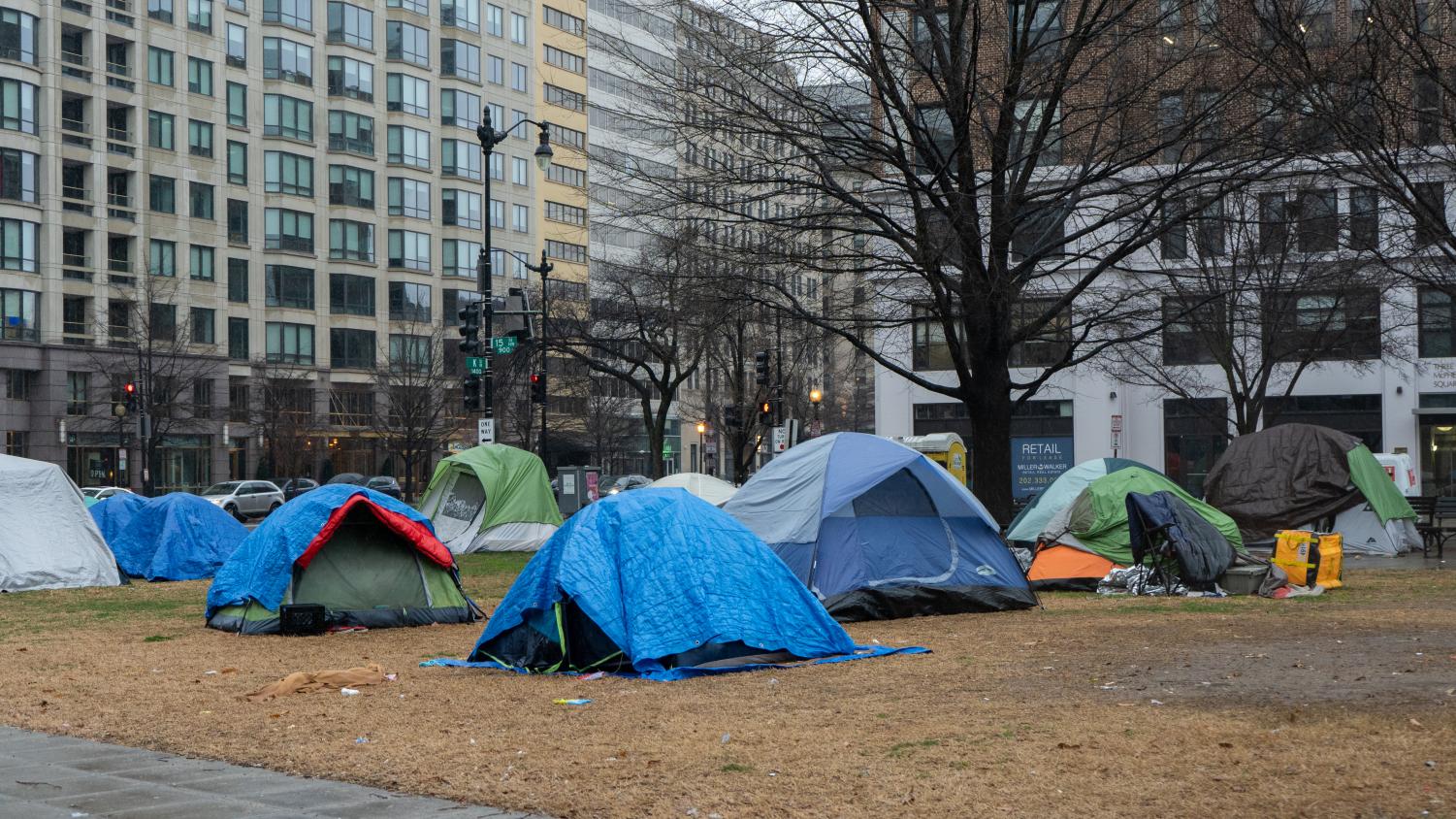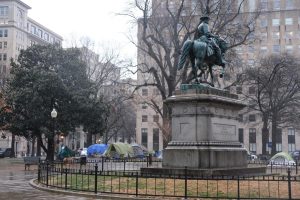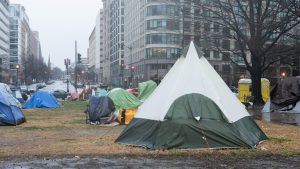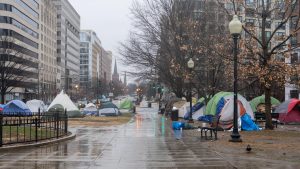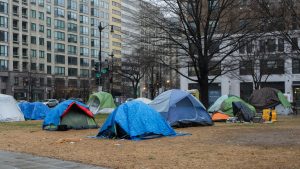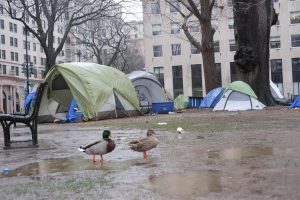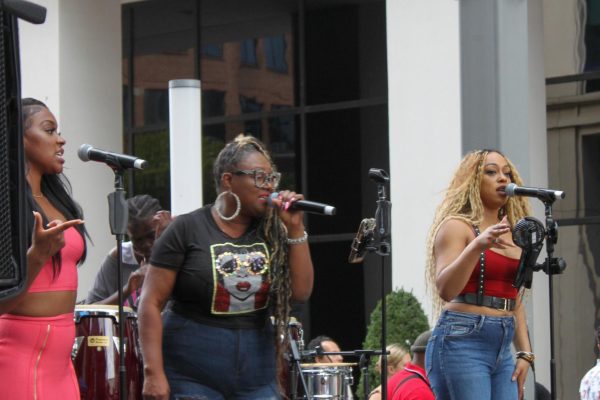Encampment clearings displace people experiencing homelessness
NPS cleared McPherson Square as part of DC government’s encampment cleaning efforts
The Office of the Deputy Mayor for Health and Human Services, DMHHS, cleared an encampment located near 13th and G Street NW on April 27, and an encampment located at 111 Massachusetts Ave. SE on April 20, according to the DMHHS website. Before the more recent clearings, a long-time encampment at McPherson Square was cleared in February.
The displacements are just a few of the encampment clearings that have taken place as part of the D.C. government’s efforts to remove encampments of people experiencing homelessness.
People living in McPherson Square were cleared out by the National Park Service on Feb. 15 as part of the Washington, D.C., government’s initiative to clear encampments of people experiencing homelessness in public areas. The square, located about a quarter mile away from the White House, was one of the largest homeless encampments in the District with over 70 individuals taking residency here, according to a Feb. 13 NPS statement about the clearing.
The clearing was part of an ongoing effort to clear encampments of people experiencing homelessness in public spaces in the District. According to the DMHHS website, clearings occur when sites present a security, health or safety risk.
A schedule of all the upcoming clearings is regularly posted on the DMHHS website. The most recent clearing was the Metro Station clearing on April 27. As of May 3, there are no additional clearings planned.
Cocoa said she lived at McPherson Square for almost a year with her boyfriend before getting cleared out during the NPS encampment clearing.
Since moving to Washington, D.C., from Miami five years ago, Cocoa said she has struggled to find safe and stable places to live. Cocoa said she ended up living in the square after being removed from two other encampments in D.C. early February.
“Franklin Park closed first, then 9th and K and then I came here,” Cocoa said in an interview on Feb. 12, before the clearing. “Now that this park is closing I have no options here at all.”
The encampment closure came two months earlier than scheduled, according to a Jan. 27 letter from NPS to the Deputy Mayor for the District of Columbia Health and Human Services. DMHHS had asked the service to move up its timeline for clearing the park because of “high levels of illegal drug and other criminal activity.”
According to the Jan. 27 letter, the high levels of illegal activity within McPherson Square did not allow social service providers and mental health clinicians to safely work with residents.
Cocoa said she disagreed with the service and their reason for clearing the square.
“I know things happen. Everyone gets frustrated and handles their rage differently so I am saying things happen but it’s not as prevalent as they want others to believe,” Cocoa said. “They are saying that we’re dangerous and there’s violence happening here, stuff like that but that’s not fully true.”
The District requires a 14-day notification period before encampments are cleared, according to DMHHS’s encampment protocol engagement FAQs.
In the Feb. 13 NPS statement regarding McPherson Square, residents were first notified about the updated closure date in January.
From her past experiences at encampment clearings, Cocoa said she was familiar with what would happen. Residents are met with an air horn around 7 a.m. to alert them to start the process of packing up, Cocoa said.
They are given a deadline of 10 a.m. or they face legal consequences, like jail time, if still in the park, Cocoa said.
A team of park officials goes by each tent to evacuate residents and check to see if people are still in tents. Cocoa said around 9:30 a.m park officials started fencing up all the entrances to the park.
The United States Park Police began the evacuation with three verbal announcements of the closure, a little bit past 10 a.m., according to a Feb. 15 NPS statement on McPherson Square.
By 3 p.m., two people were left in the park and were arrested for violating the park closure, according to the Feb. 15 NPS statement. They were given a ticket and released shortly after.
Cocoa said a team of park officials dressed head to toe in white suits came through with a shovel and bulldozer to collect anything left over.
Any non-hazardous personal items left behind are tagged and stored by the United States Park Police for pickup for about 60 days, according to the Jan. 27 letter.
“They give us time to pick our stuff up, but you basically have to be packed before they get there,” Cocoa said. “It’s impossible.”
Homelessness in the District has hit an all time low, according to the annual point-in-time count, a census that counts people experiencing homelessness. However, the number of encampments increased by over 40%, according to DMHHS.
With the rise of encampment clearings, many organizations and social service providers say they have found it difficult to continue helping displaced residents, said Maggie Quinn, a member of the student-run mutual aid organization Everybody Eats D.C.. Quinn and their team went to the square to distribute food before the clearing.
“We’ve definitely lost contact with a lot of the people who we previously had built relationships with,” Quinn said. “We don’t know where they are now because there wasn’t really one central location for people to go, which is an issue and a huge issue for their social workers.”
Cocoa said she, like many others, is unsure where she can go next because of all the encampment clearings.
“I don’t see how a person that has a tent here is threatening you in your condo,” Cocoa said.

Sloan Cole (She/Her) is a junior pursuing a major in CLEG and a minor in journalism. She loves to thrift, spend time with her friends and cats, and art.

Maegan Seaman (She/Her) is a senior pursuing a broadcast journalism major and political science minor. She loves hiking and kayaking, photography, and...

Jack Ford (He/Him) is a senior studying journalism. He enjoys working out, photography, and the beach.


